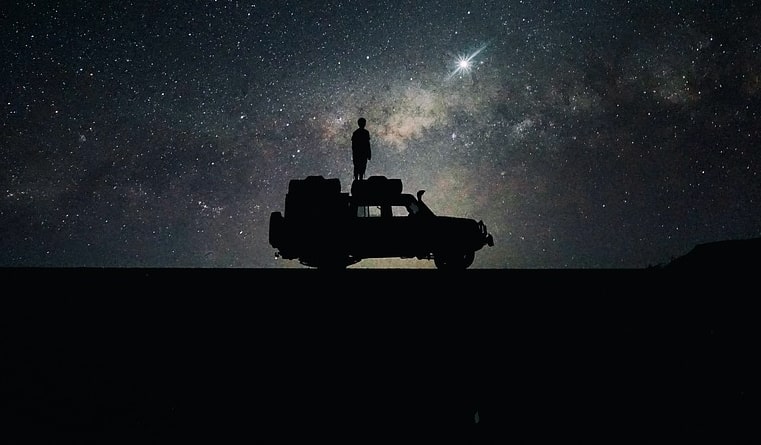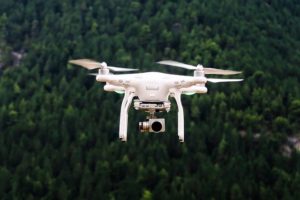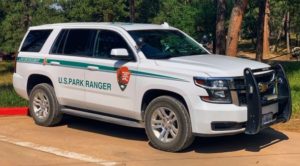Savings money while visiting national parks is always an important consideration. And while some costs can’t be avoided, camping in your car may be one way to save some cash. But there are some important things to know first.
Can you camp in your car in national parks? Yes, if you’ve paid for and are parked in a designated camping spot. If not, you can find other options available nearby where you can camp for free in your car while still enjoying the park.
![]() If you’re parked in a campsite and you’ve paid for a spot, you can sleep in your car. But if you’re looking to get out into the wilderness or alone under the stars in your car or RV, you’ll have to find an alternative to national parks. Luckily, you can often get that experience, oftentimes for free, not far from the park you’re visiting. Let’s see how.
If you’re parked in a campsite and you’ve paid for a spot, you can sleep in your car. But if you’re looking to get out into the wilderness or alone under the stars in your car or RV, you’ll have to find an alternative to national parks. Luckily, you can often get that experience, oftentimes for free, not far from the park you’re visiting. Let’s see how.
What are Backcountry and Dispersed Camping?
Backcountry Camping
What It Is
First, let’s define some terms so we know what we’re talking about. You may hear terms like “backcountry camping” or “dispersed camping”. These are, however, different terms and the distinction is important. And the rules governing both can sometimes differ. Here’s what you need to know.
Fist, backcountry camping is camping outside of established campgrounds in an area where you are likely to have no amenities, including water, toilets, electricity, or parking lots. The beauty of backcountry camping is, of course, that you will get away from crowds and other visitors and get a more authentic experience with the park.
The key to backcountry camping is to plan. You will have to have all your food, medicine, and amenities with you as they will not be available. You’ll also be responsible for protecting your things from curious or hungry wildlife.
The Rules
In addition to having all your gear, food and water, you’ll want to make sure that what you’re doing is legal. Backcountry camping is legal in most national parks, but only in certain areas and sometimes only with a permit. Permits in some parks are free, while others can charge you more than $20 per person for a backcountry camping permit.
Make sure you get a permit if it’s required, as park rangers can and will give you a ticket that will cost you far more than the permit. You’ll also likely be asked to leave. Check each park for details, as you may have to get your permit far in advance of your visit.
The idea of the permits is to both recoup some costs for park operations and protect the park. Many areas in national parks have sensitive ecosystems or vulnerable plant or animal species. By restricting where you can backcountry camp, the parks are often trying to protect these.
The other idea behind permits is to limit the number of people who are backcountry camping at any one time. This prevents overcrowding and has the benefit of protecting the park.
Dispersed camping
What is dispersed camping and how is it different from backcountry camping? Dispersed camping is generally camping outside of a designated campground. The difference between backcountry and dispersed camping is that you are generally free to choose where you disperse camp, and the range of options is much greater. If you have a backcountry camping permit, you can basically do dispersed camping by backpack in national parks so long as you stay in the designated areas. You cannot, however, drive and park wherever you choose and almost all backcountry camping in national parks is without your car.
What are your options for dispersed camping on federal lands? Actually, there are more options than you may think. Although you can’t just pull your car into a random area and camp overnight in a national park, you may be able to do it in other areas. One of those is national forests. So what’s the difference?
The Difference Between National Parks and National Forests
National Parks
There are several differences between national parks and national forests. For one, national parks are administered by the National Park Service. The National Park Service is also responsible for overseeing several other types of federal lands, including national battlefields, national lakeshores, and national recreation areas, among others. In total, it manages 423 units covering all 50 states. According to the NPS, “The mission of the National Park Service is to preserve unimpaired the natural and cultural resources and values of the national park system for the enjoyment, education, and inspiration of this and future generations.” Because of the Service’s emphasis on preservation, you’ll often find more restrictions on the use of lands managed by the National Park Service.
National Forests
National forests are managed by the United States Department of Agriculture Forest Service. Forest Service’s mission is “To sustain the health, diversity, and productivity of the Nation’s forests and grasslands to meet the needs of present and future generations.” You’ll notice that the Forest Service’s mission mentions productivity and meeting the needs of people. The result is that there is less of an emphasis on preservation, although you are still required to be environmentally friendly when visiting.
The way these different philosophies manifest themselves is in the usage of the different areas. Whereas backcountry and dispersed camping are limited in national parks, they are much more easily available in national forests. In most national forests, you are free to disperse or backcountry camp anywhere away from established campgrounds and anywhere your vehicle or equipment don’t block developed trails or rights-of-way. As with anything, you’ll want to check each forest’s rules and regulations. Some forests limit the amount of time you can camp (sometimes 14-16 days). They also may require a permit for larger groups. Finally, make sure to follow forest rules for campfires, as they may be restricted to certain areas.
A Great Option – BLM Land
Overview
Another great option is land administered by the Bureau of Land Management (BLM). The BLM is part of the Department of the Interior and administers over 247 million acres. Camping is available at most BLM sites, and it’s one of the best places for sleeping in your car, backcountry camping or dispersed camping. While most of the areas require a fee for established campgrounds, you can camp freely in the rest of the park. According to the BLM:
“Camping on public lands away from developed recreation facilities is referred to as dispersed camping. Most of the remainder of public lands are open to dispersed camping, as long as it does not conflict with other authorized uses or in areas posted “closed to camping,” or in some way adversely affects wildlife species or natural resources.
Dispersed camping is allowed on public land for a period not to exceed 14 days within a 28 consecutive day period.”
And one of the best things is that using the land to camp is free on almost all BLM land. The BLM does request, however, that you try to use previously used spots in order to reduce the impact of new disturbances.
BLM Land Near National Parks
Another great thing about BLM land is that it is often located near national parks. So while you can’t sleep in your car in a national park, there may be BLM land or a national forest nearby where you can disperse or backcountry camp. For instance, while you can’t sleep in your car in Yellowstone National Park, dispersed camping is available in the nearby (and much less crowded) Shoshone National Forest.
Want to visit the popular Arches National Park or nearby Canyonlands National Park? You’ll find plenty of BLM land as well as the Manti-La Sal National Forest nearby where you can try and find a place to avoid the crowds. There are plenty of other examples where you can save time and money and get away from crowds by seeking out BLM land and national forests. As long as you’re prepared to do without some basic amenities, you may just find some solitude in the great wide open.
Conclusion
The rules on camping in your car in national parks are relatively straightforward, but you can find other alternatives for free car camping on other federal and adjacent land. Overnight car camping in national forests and BLM land is permitted and you might find one right next to the park you’re visiting.




